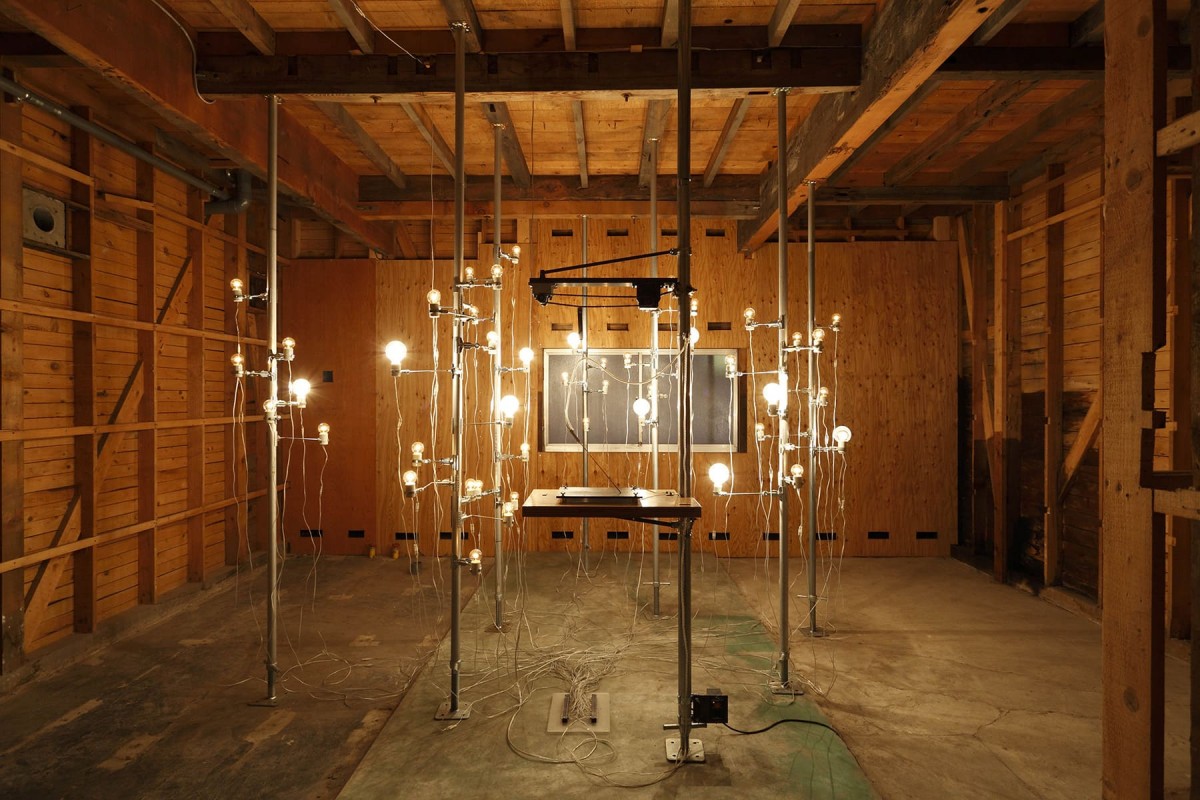
AIRS企画Vol.4「再考現学 Re-Modernologio」
AIRSハウス 006(青森)
2011.10.29 – 12.11
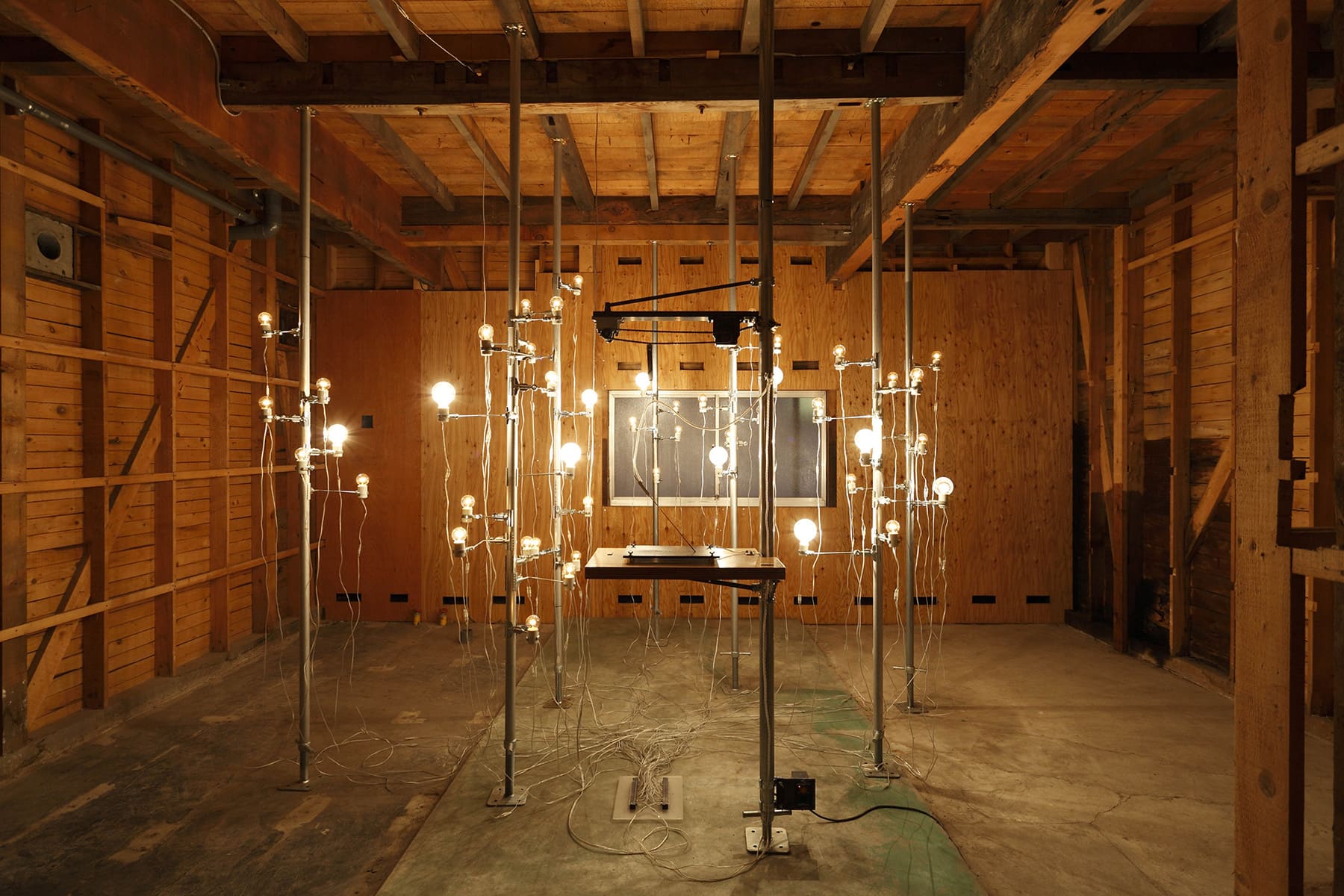
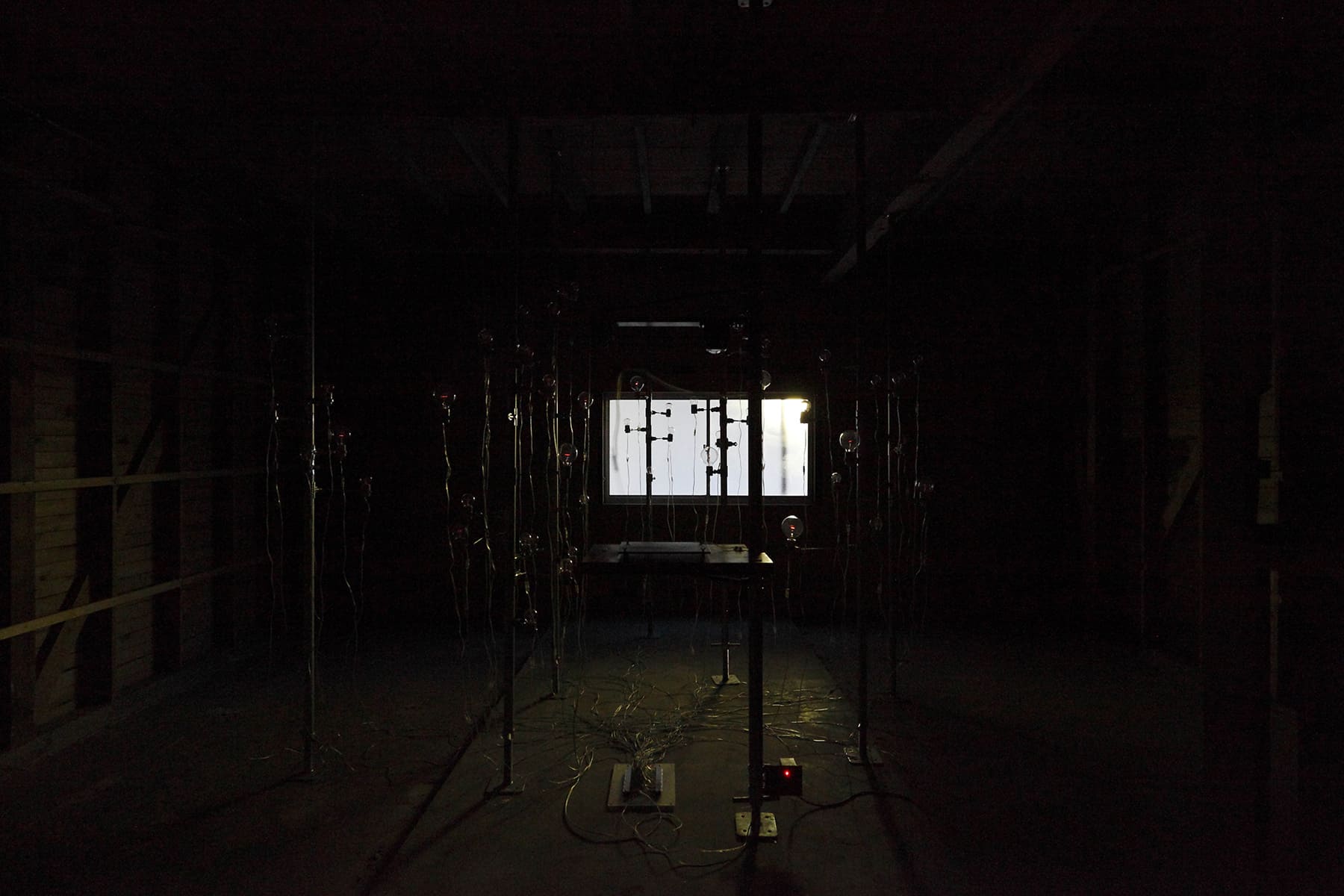
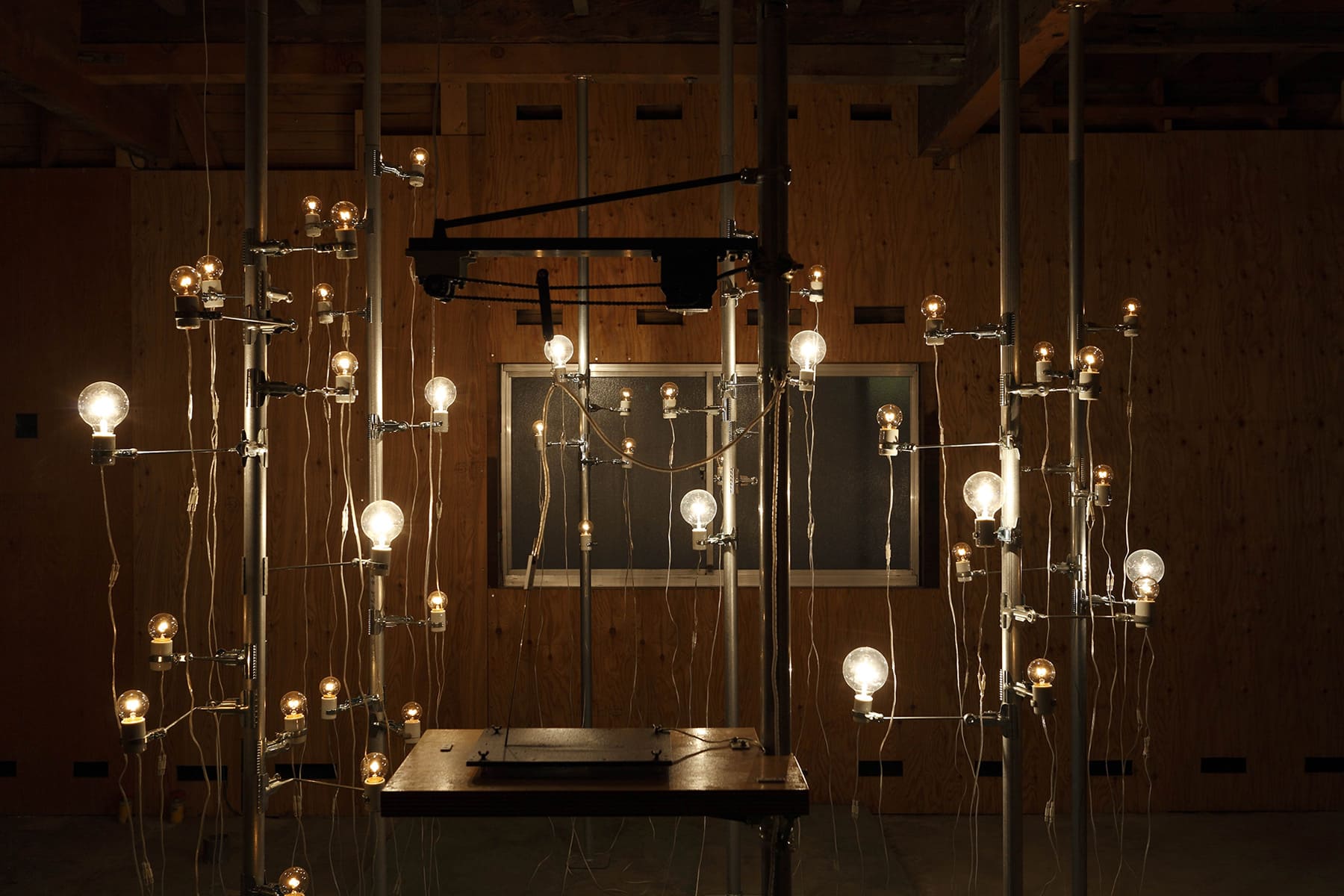
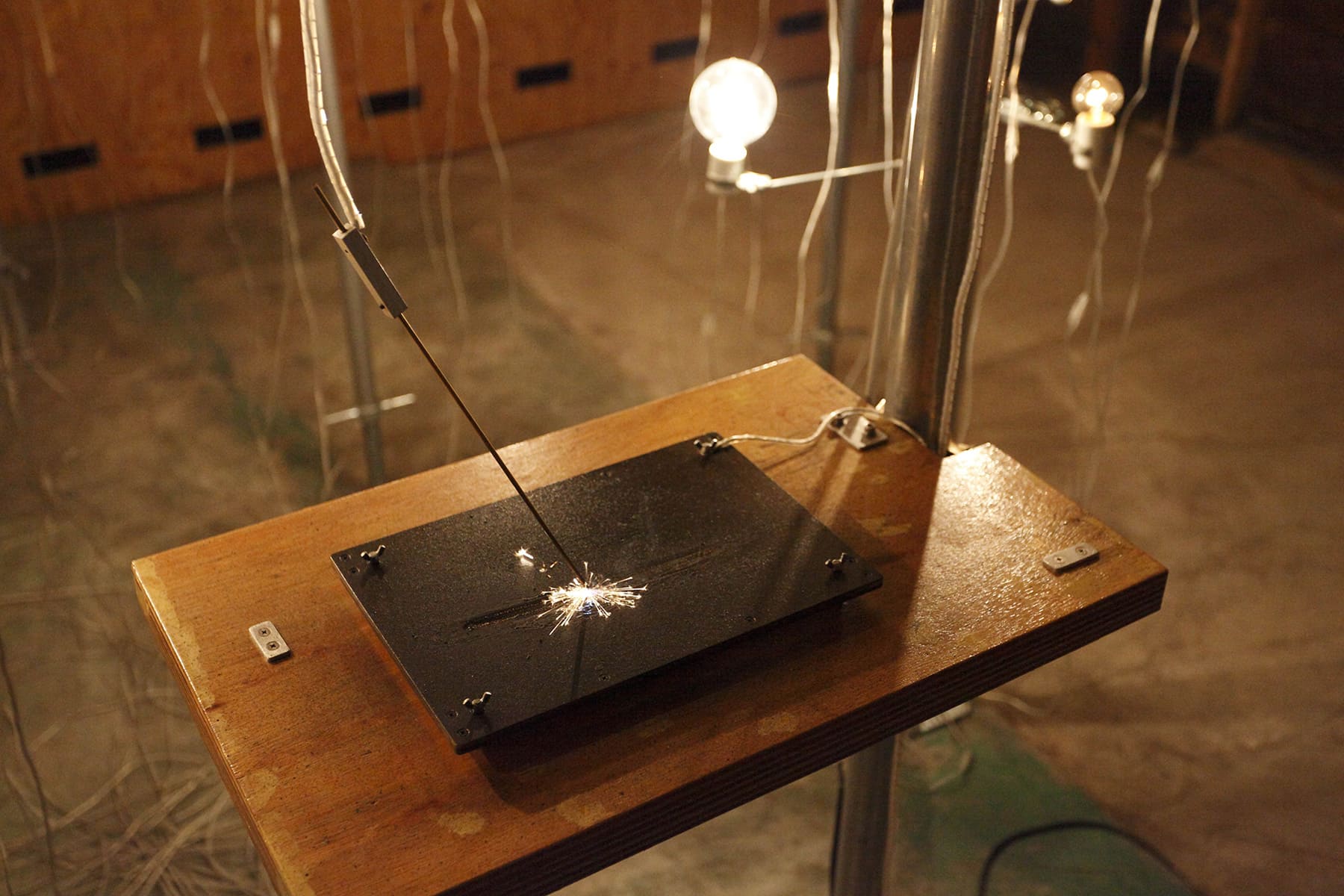
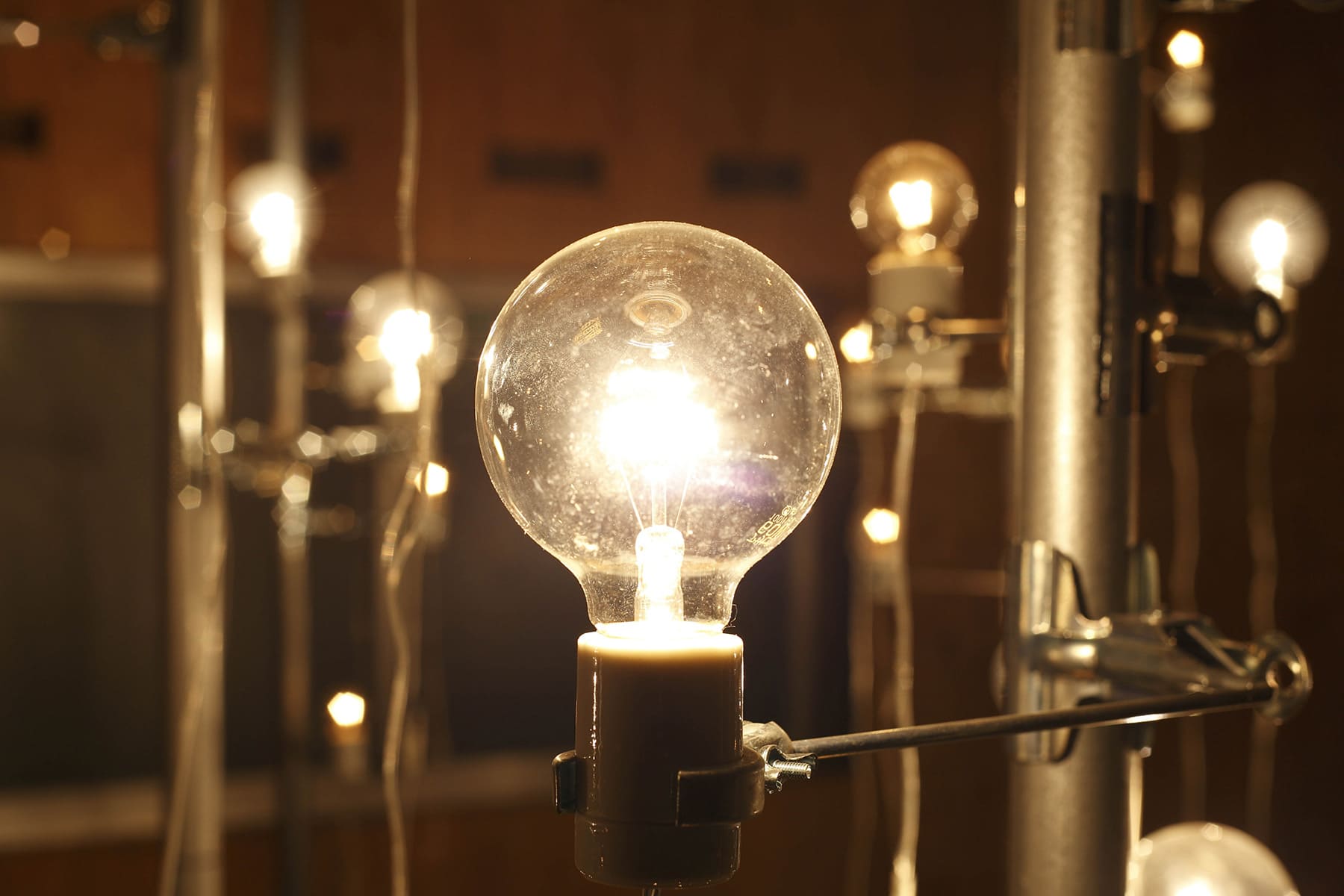
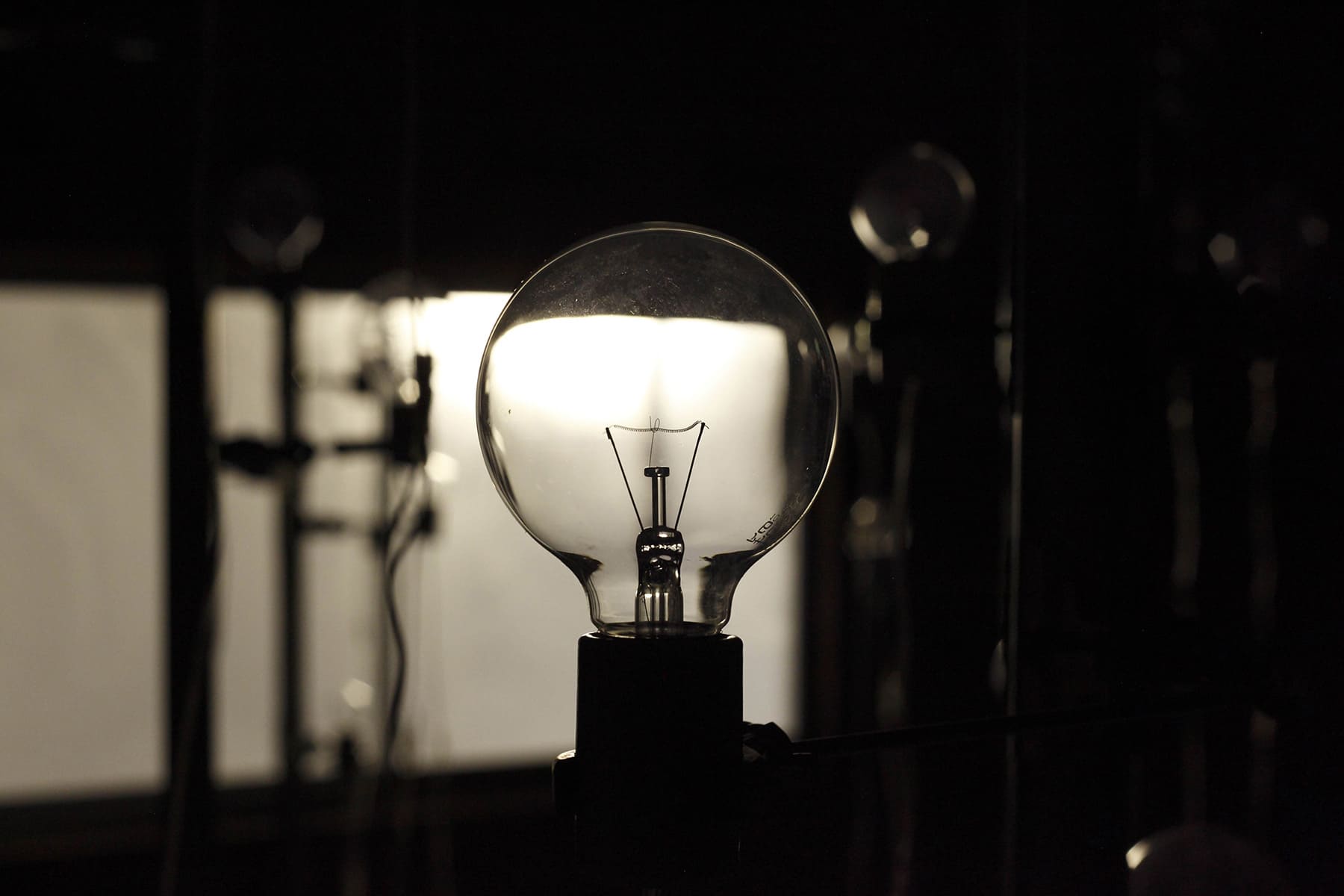
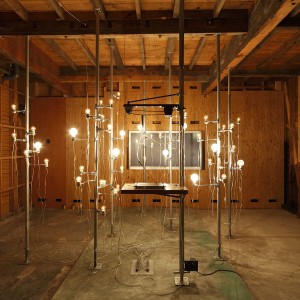
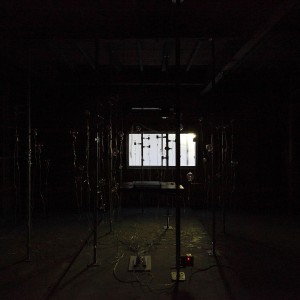
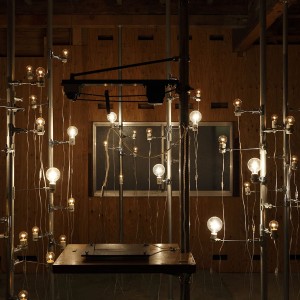
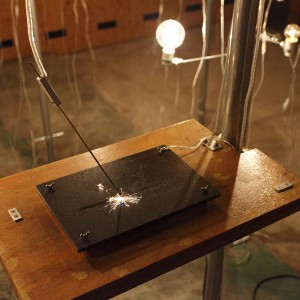
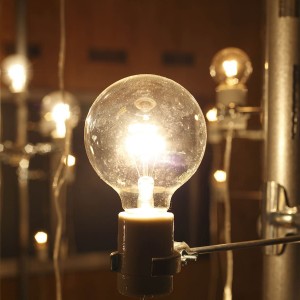
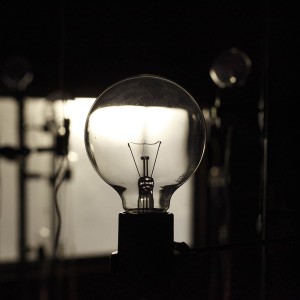






ささやかなスペクタクル
服部 浩之(青森公立大学国際芸術センター青森学芸員/Midori Art Center(MAC)住人)
静かなスパークとともに、電気が流れ、無数の電球が一斉に点灯し、しばらく後にすべて消え、また点灯する。これがただ延々と繰り返される。その静寂のなかに微かに響くのは、低音のモーターの回転音と、金属棒(真鍮)が鉄板上をゆるやかに触れながら移動する摩擦音、そして時折火花が散るスパーク音のみだ。既存の壁や天井をはがされ、構造体と外壁が剥きだしになり、床もコンクリート下地のままの少々荒々しいが静けさの漂う仮設空間に、《長島2-4-20のための接点》と名付けられたこの作品は存在する。
このタイトルは、「長島2-4-20」という住所をもつ固有の場で、二つの金属の「接点」により生じる現象に焦点を当てた作品であるという事実を、超具体的な情報のみで即物的に表明するものだ。タムラサトルの作品は、なんでもないものの特性や単純な現象を少しだけ大げさな機構により誇張して実現することで、身体感覚として楽しむことができるちょっと大仰な「遊び」に変換するという側面が強い。つまり、金属が触れ合うことで通電し白熱球の照明が点灯するというどうしようもないくらい当たり前でほとんど意味も価値もないことを、なるべく非円滑的な構造を築くことで、矛盾を承知で表現すると、ささやかなスペクタクルとでも言える状況を発生させ、見るものを惹きつける作品に昇華するのだ。
単管、目玉クリップ、配線や接続部品、絶縁陶器、モーター、チェーンなど、ひとつひとつの素材はホームセンターなどで手に入る一般的なものがほとんどだ。ただ、実は通常より少し細い径の単管を採用していたり、目玉クリップをわずかに改造し美しい機構の照明用アームに転用したり、配線の太さや色を制御したりと、その組み合わせ方を熟慮し素材にわずかに手を加えてディティールの収め方を洗練させるなど、細部にまで注意を払う職人気質の丁寧な眼で、与えられた空間の特性も含めて、全体をつくりあげていくのだ。どんな場所でも展開できる汎用性のある可変的な構造と、その場だからこそ実現できる個別性を引き出す構成の併存により、タムラサトルはおかしみの世界を形成する。
スイッチのon/offという極めて無価値と思われる構造を美しい装置として肥大化することで、人の知覚にダイレクトに訴えかけるタムラのもつユーモアは、少し視点を変えてみることで様々な事象が愉快に見えるよう、日々の生活に創造性を発見する可能性を提示してくれるかもしれない。
Subtle Spectacle
HATTORI Hiroyuki (Curator, Aomori Contemporary Art Centre / Resident, Midori Art Center [MAC])
An electric current flows out with a quiet spark, and a hundred light bulbs light up in unison and go dark soon after,only to flicker once again. In the hushed silence, the low rotating hum of the motor, the friction of brass rods gently gliding across the top of an iron plate, and the occasional sound of a scattering spark; these are the only sounds to be heard. This piece, named Contact for Nagashima 2-4-20, exists in a hypothetical space, one rather rough yet tranquil, where existing walls and ceilings are torn down, facades lay bare, and the floor is left in its concrete foundation.
The title, “Nagashima 2-4-20,” refers to a specific place; it is an address. The piece focuses on the phenomenon which occurs upon “contact” between two metals, and expresses this reality pragmatically through concrete information alone. There is a strong aspect of TAMURA Satoru’s work which, by exaggerating the uniqueness of ordinary things and commonplace phenomena in slightly grandiose contraptions, converts his work into slightly spectacular, sensational “playthings” for the audience to experience and enjoy. In short, here he takes the matter-of-course and near-meaningless phenomenon of metals touching to create an electric current, which causes incandescent light bulbs to flicker, and knowingly expresses a contradiction by building the least harmonious construction possible. This creates what we may call a subtle spectacle and transforms it into a piece that draws in everyone who sees it.
Single-lumen tubing, binder clips, wiring and coupling parts, electrical insulators, motors, chains, and more–each one of these materials is an ordinary item found in your local hardware store or home improvement center. However, through adding his touch to various items, like using narrower tubing than usual, altering binder clips into beautifullystructured lighting arms, and regulating the thickness and color of the wiring, Tamura thinks of how to combine materials to refine his piece. With an artisan’s meticulous eye for the finest of details, TAMURA Satoru also incorporates the characteristics of his art space to create a whole. Tamura weaves a droll world by fusing the coexistence of versatile structures that can develop anywhere and compositions which evoke the uniqueness of his chosen space.
By bloating the seemingly worthless mechanism of an on/off switch into some kind of beautiful gadget, Tamura’s sense of humor appeals directly to people’s sensory perceptions, like seeing events more amusingly by slightly changing one’s perspective. It might suggest the possibility to discover creativity in everyday life.